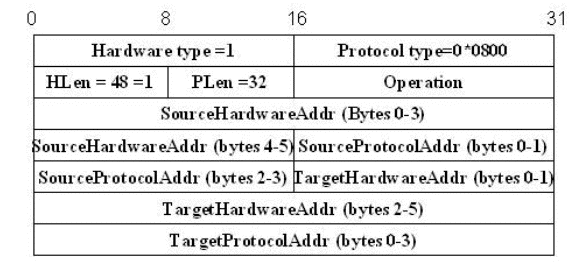Address Resolution Protocol (ARP) | Computer Networks - Computer Science Engineering (CSE) PDF Download
Address Resolution Protocol (ARP):
IP data grams contain IP addresses, but the physical interface hardware on the host or router can only understands the addressing scheme of that particular network. So the IP address should be translated to a link level address.
One simplest way to map an IP address in to a physical network address is to encode a host‟s physical address in the host part of its IP address. For example, a host with physical address 00100001 01001001 (which has the decimal value 33 in the upper byte and 81 in the lower byte) might be given the IP address 128.96.33.81. But in class C only 8 bits for host part. It is not enough for 48 bit Ethernet address.
A more general solution would be for each host to maintain a table of address pairs, i.e, and the table would map IP addresses into physical address. While this table could be centrally managed by a system administrator and then be copied to each host ion the network, a better approach would be for each host to dynamically learn the contents of the table using the network. This can be accomplished by Address Resolution Protocol (ARP). The goal of ARP is to enable each host on a network to build up a table of mappings between IP address and link level addresses.
Since these mappings may change over time, the entries are timed out periodically and removed. This happens on the order of every 15 minutes. The set of mappings currently stored in a host is known as ARP cache or ARP table.

The above figure shows the ARP packet format for IP to Ethernet address mappings. ARP can be used for lots of other kinds of mappings the major difference is their address size. In addition to the IP and link level addresses of both sender and target, the packet contains
- a HardwareType fiels, which specifies the type of the physical network (ex., Ethernet)
- a ProtocolType field, which specifies the higher layer protocol (ex., IP)
- HLen (hardware address length) and PLen (protocol address length) fields, which specifies the length of the link layer address and higher layer protocol address, respectively
- An Operation field, which specifies whether this is a request or a response
- The source and target hardware (Ethernet) and protocol (IP) address.
The results of the ARP process can be added as an extra column in a forwarding table.
|
21 videos|113 docs|66 tests
|
FAQs on Address Resolution Protocol (ARP) - Computer Networks - Computer Science Engineering (CSE)
| 1. What is ARP and how does it work? |  |
| 2. Why is ARP important in computer networks? |  |
| 3. What is an ARP cache and how does it work? |  |
| 4. Can ARP be used for communication between devices in different networks? |  |
| 5. What are the security risks associated with ARP? |  |

|
Explore Courses for Computer Science Engineering (CSE) exam
|

|

















